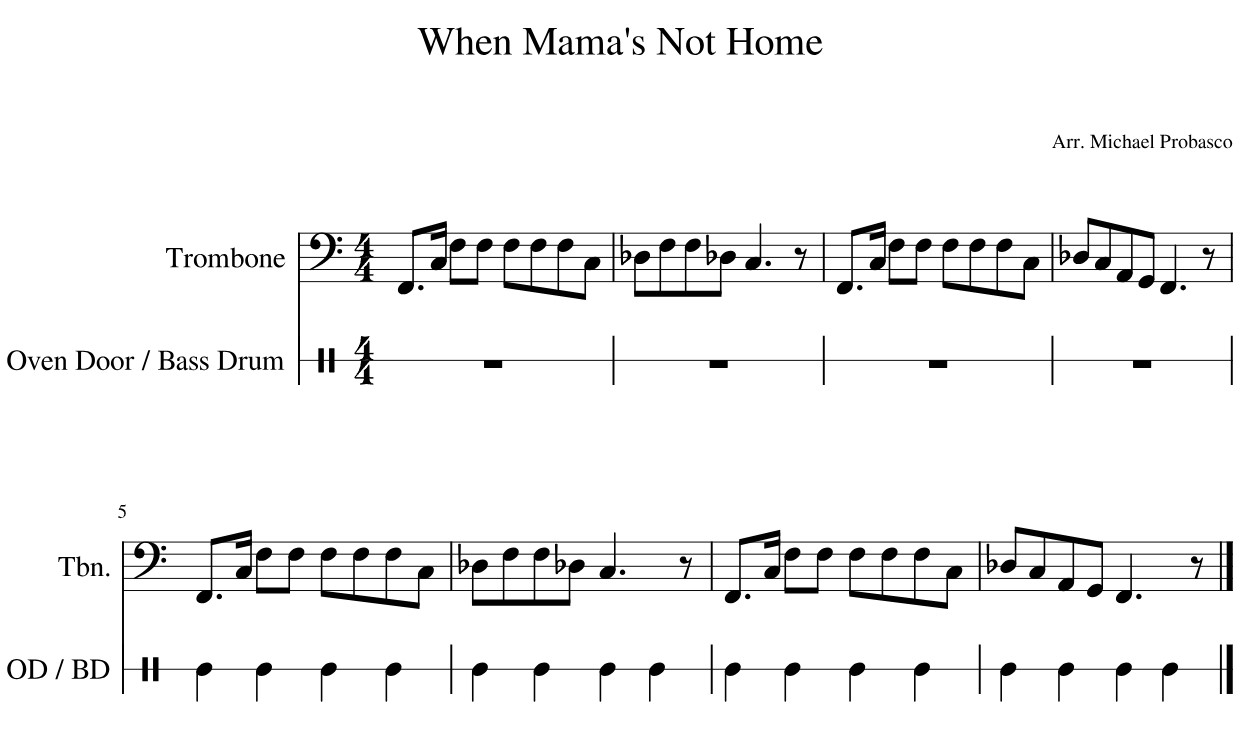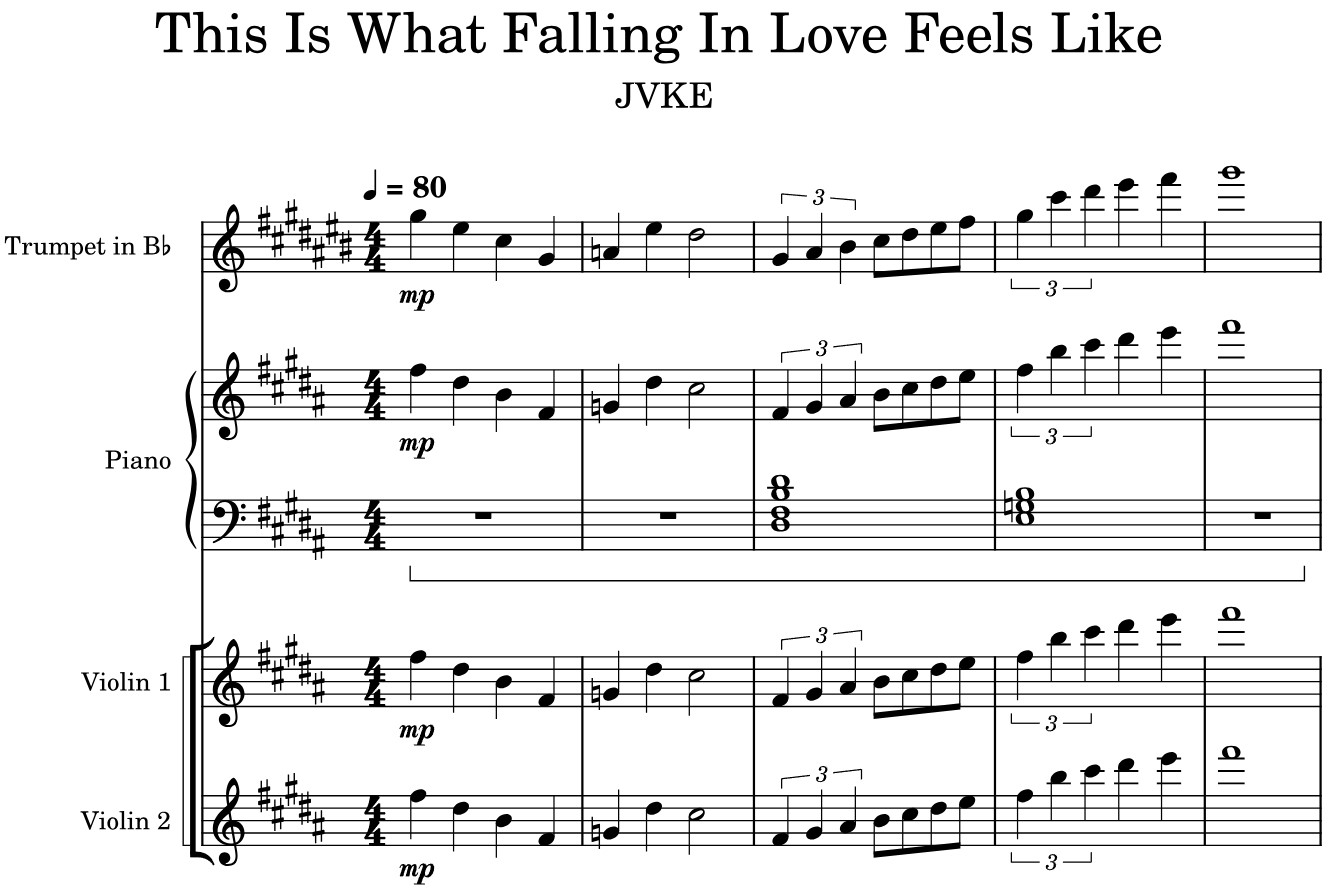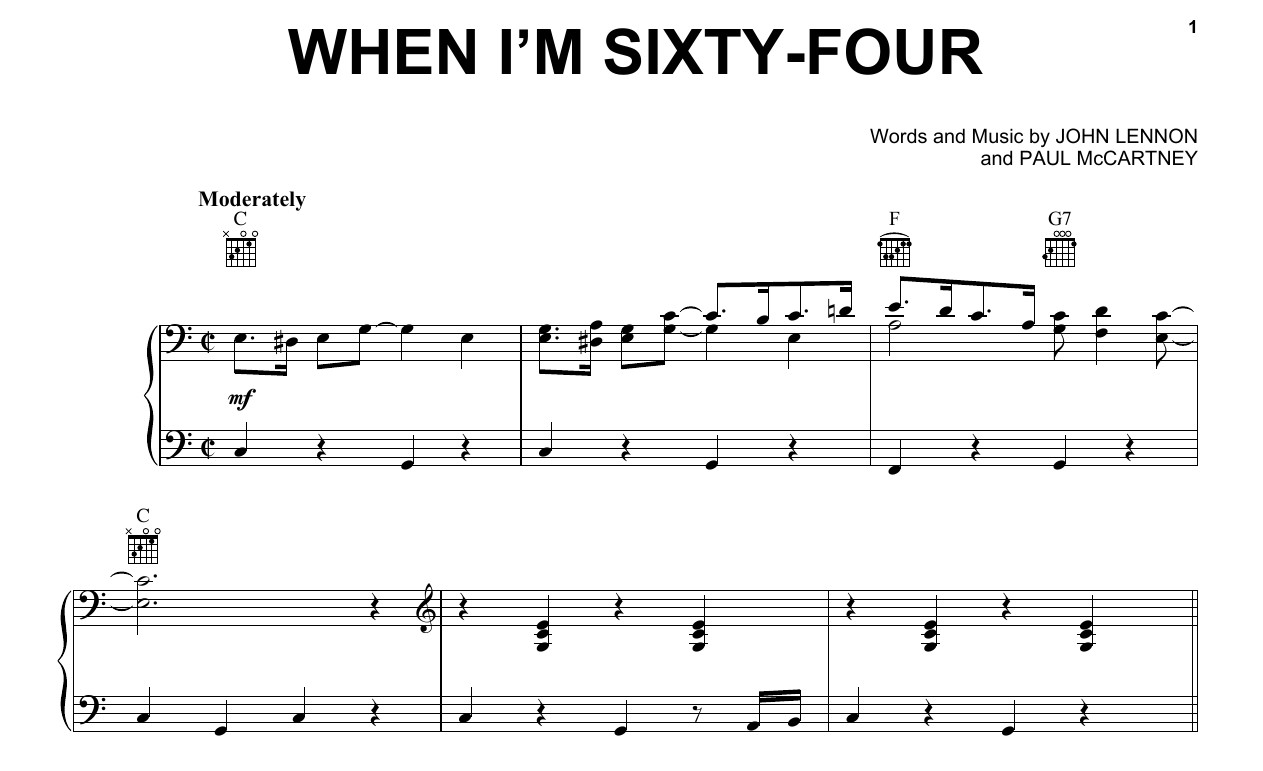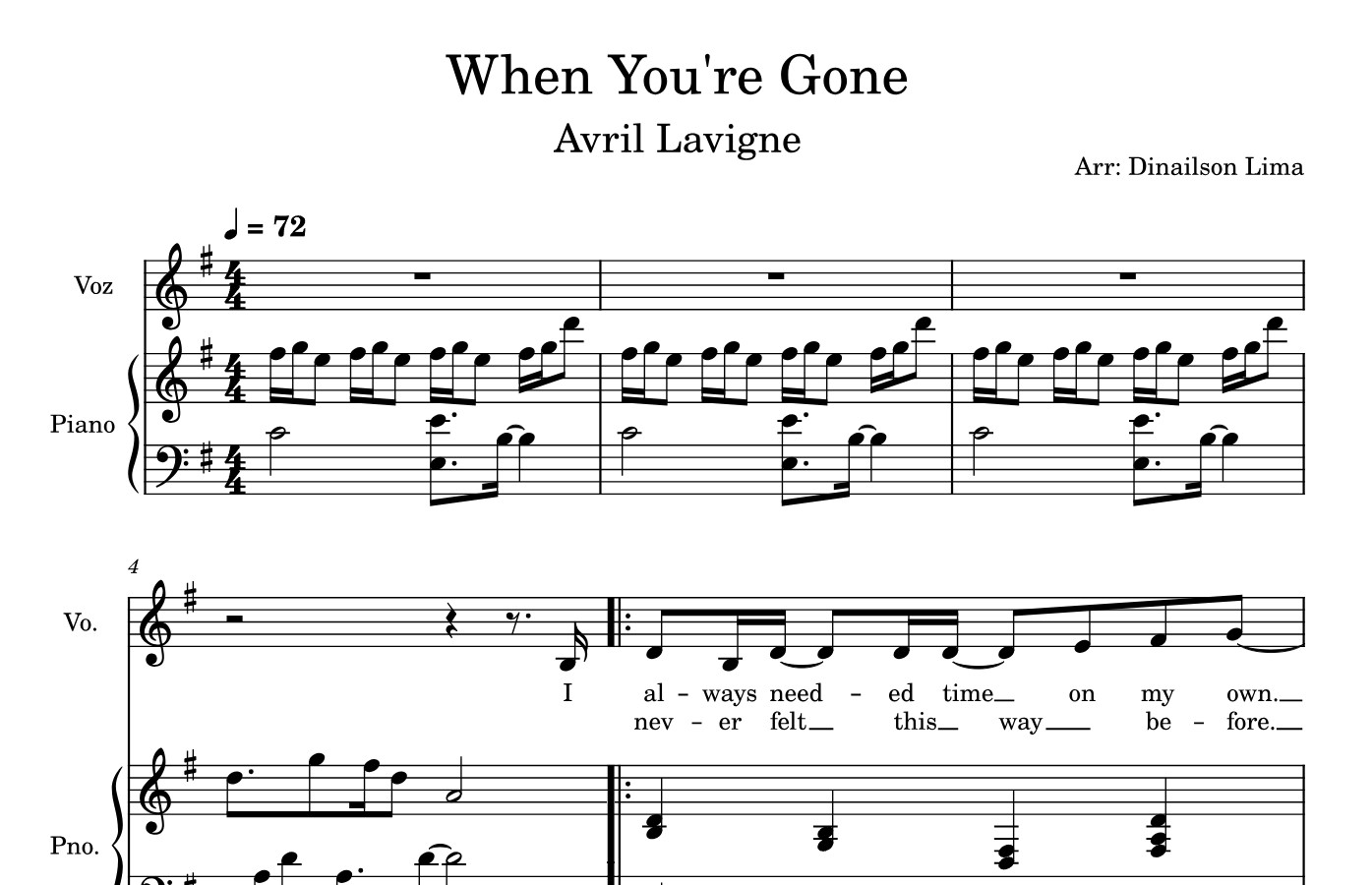Home>Production & Technology>Sheet Music>When Peace Like A River Hymn Sheet Music


Sheet Music
When Peace Like A River Hymn Sheet Music
Modified: February 24, 2024
Find and download the sheet music for the hymn "When Peace Like A River." Access a wide range of sheet music options for this beloved hymn.
(Many of the links in this article redirect to a specific reviewed product. Your purchase of these products through affiliate links helps to generate commission for AudioLover.com, at no extra cost. Learn more)
Table of Contents
Introduction
Sheet music is a fundamental tool for musicians, allowing them to capture and reproduce the beautiful melodies of various compositions. One genre that heavily relies on sheet music is hymnals, which are collections of sacred songs and hymns used in religious worship. These hymns have been etched into the hearts and minds of believers for centuries, providing solace, inspiration, and a means to connect with the divine.
One such hymn that has stood the test of time is “When Peace Like a River.” The sheet music for this hymn encapsulates the profound message of finding peace amidst life’s trials. Whether you’re a choir director, a pianist, or a vocal enthusiast, delving into the sheet music for “When Peace Like a River” opens up a world of musical possibilities.
In this article, we will explore the history of the hymn, delve into the composer and lyricist information, examine the musical notation and structure, discuss key and tempo, explore vocal and instrumental parts, provide performance suggestions, highlight variations and arrangements, and showcase popular recordings and performances. So, grab your sheet music and let’s embark on a journey into the melody and meaning of “When Peace Like a River.”
History of the Hymn
“When Peace Like a River,” also known as “It Is Well with My Soul,” is a hymn that holds deep historical significance and carries a message of hope and trust in God. The lyrics of this hymn were written by Horatio Spafford, an attorney and devout Christian, in the 19th century.
The inspiration behind the hymn stems from a great tragedy in Spafford’s life. In 1873, he suffered significant personal loss when the steamship Ville du Havre, carrying his wife and four young daughters, sank in the Atlantic Ocean. Tragically, only his wife survived, while his precious children perished in the heartbreaking accident.
Amidst his grief and sorrow, Spafford found solace in his faith and penned the lyrics of “When Peace Like a River” as a testament to his unwavering trust in God, even in the face of unimaginable pain. His heartfelt words express the underlying theme of finding peace and comfort in God’s sovereignty, regardless of life’s circumstances.
The hymn gained popularity as it resonated with many who also faced trials and tribulations. It offered a comforting reminder that amidst the storms of life, there is still a deep-seated peace that can be experienced through faith.
The lyrics were later set to music composed by Philip Bliss, a prominent hymn writer and gospel singer in the 19th century. Together, Spafford’s poignant words and Bliss’s melodic composition created a powerful hymn that continues to touch hearts and inspire worshippers around the world.
Since its creation, “When Peace Like a River” has become a cherished hymn in many Christian traditions and has been translated into numerous languages. Its timeless message of finding peace in the midst of adversity has made it a staple in worship services, funerals, and personal reflections.
The hymn’s enduring popularity serves as a testament to the resilience of the human spirit and the profound impact that music rooted in personal faith can have on individuals and communities alike. It stands as a reminder that even in the darkest moments of life, there is hope, comfort, and peace to be found in God.
Composer and Lyricist Information
The lyrics of “When Peace Like a River” were penned by Horatio G. Spafford, a lawyer and devout Christian, in 1873. Spafford wrote the hymn as a personal expression of his deep faith and trust in God during a time of immense personal tragedy and loss.
Philip Bliss, a renowned composer and gospel singer, later set Spafford’s lyrics to music. Bliss was deeply moved by the powerful message of the hymn and crafted a melodic composition that perfectly complemented the heartfelt words.
Horatio G. Spafford, born on October 20, 1828, in North Troy, New York, was a successful lawyer and businessman. He was a devoted Christian and actively involved in the ministry. The tragic event that inspired the lyrics of “When Peace Like a River” occurred in 1873 when the steamship Ville du Havre, carrying Spafford’s wife and four daughters, sank in the Atlantic Ocean. Only Spafford’s wife survived, with his daughters tragically losing their lives in the disaster.
In the midst of his grief, Spafford found solace in his faith and turned to writing as a means of expressing his emotions and his unwavering trust in God. The result was the powerful and deeply moving lyrics of “When Peace Like a River.”
Philip Bliss, the composer of the hymn’s music, was born on July 9, 1838, in Clearfield County, Pennsylvania. He was a prolific songwriter and gospel singer, known for his melodic compositions and his ability to convey heartfelt messages through music. Bliss’s musical interpretation of Spafford’s lyrics brought the hymn to life and added a layer of emotional resonance.
Tragically, both Spafford and Bliss had their lives cut short in separate accidents. In 1876, Philip Bliss and his wife died in a train wreck, leaving behind a rich legacy of gospel music. Horatio Spafford passed away ten years later in 1888.
Despite the tragedies that marked their lives, the collaboration between Spafford and Bliss resulted in a hymn that stands as a testament to the enduring power of faith and the resilience of the human spirit. Through their words and music, they have left a lasting impact on the world of hymnody, inspiring countless individuals through their shared experience of pain, loss, and the hope that can be found in God.
Musical Notation and Structure
The musical notation and structure of “When Peace Like a River” follow a traditional hymn format, consisting of four-part harmony and a simple yet powerful melody. The hymn is typically written in 4/4 time signature, meaning there are four beats in each measure.
The song is usually performed in the key of G major, although it can be transposed to different keys to accommodate various vocal ranges or instrumental preferences. The G major key gives the hymn a bright and uplifting quality, perfectly complementing the message of finding peace in God’s presence.
The overall structure of the hymn follows a standard pattern of verses and a chorus. It begins with a verse, followed by a chorus, and then repeats this pattern throughout the song. The repetition of the chorus serves to reinforce the central message of the hymn while providing a unifying element to the composition.
Typically, the sheet music for “When Peace Like a River” includes the musical notation for vocal parts, such as soprano, alto, tenor, and bass. Each part contributes to the harmonization of the hymn, creating a rich and lush sound when sung together.
In addition to the vocal parts, the sheet music may also include musical notation for various instruments that can accompany the hymn, such as piano, organ, guitar, or string instruments. These additional instrumental parts can add depth and texture to the performance, enhancing the overall musical experience.
The tempo of the hymn is generally indicated as moderate, allowing for a gentle and reflective interpretation. However, depending on the desired mood and context, the tempo can be adjusted slightly faster or slower to suit the performance style and emotional expression of the musician or ensemble.
The musical notation and structure of “When Peace Like a River” contribute to its enduring appeal and accessibility. Its straightforward melody and harmonization make it accessible to both experienced musicians and those who are just beginning their musical journey. Whether performed by a large choir, a small ensemble, or even as a solo piece, the simplicity and beauty of the musical arrangement ensure that the message of the hymn resonates with listeners.
Key and Tempo
“When Peace Like a River” is commonly performed in the key of G major, a key known for its bright and uplifting qualities. The choice of this key adds to the overall emotional impact of the hymn, reinforcing the message of finding peace in God’s presence.
Being in G major also allows for comfortable vocal ranges for most singers, making it accessible to a wide range of performers. However, it is important to note that the key can be adjusted to suit the vocal range or instrumentation of the musicians involved in the performance.
The tempo of “When Peace Like a River” is typically indicated as moderate. This moderate tempo allows for a reflective and introspective interpretation of the hymn, capturing the essence of finding peace amidst life’s trials and tribulations.
That said, the tempo is not set in stone, and musicians have the freedom to adapt it to their own interpretation. Some performances may lean towards a slightly faster tempo, injecting a sense of energy and urgency into the hymn, while others may opt for a slower tempo, emphasizing the contemplative nature of the lyrics.
It is crucial for performers to find the right balance in tempo, ensuring that the music flows naturally and supports the emotional depth of the lyrics. Experimenting with different tempos during rehearsals can help determine the perfect tempo that aligns with the desired mood and interpretation of the piece.
Ultimately, whether performed at a moderate pace or with slight variations in tempo, the key and tempo of “When Peace Like a River” play vital roles in enhancing the overall musical experience. They set the foundation for expressing the emotions and message of the hymn, allowing performers and listeners alike to connect deeply with its timeless and comforting themes.
Vocal and Instrumental Parts
“When Peace Like a River” features a four-part vocal arrangement, with parts for soprano, alto, tenor, and bass. Each vocal part contributes to the harmonization of the hymn, creating a rich and balanced sound when sung together.
The soprano part takes the melody and typically carries the main theme of the hymn. It often has the highest pitch and can showcase the clarity and purity of a soprano vocalist’s voice. The alto part complements the soprano by providing a harmonizing line, adding depth and richness to the overall vocal texture.
The tenor part adds a higher male voice element to the arrangement. It often fills the gap between the soprano and bass parts, adding a layer of warmth and support to the harmonies. The bass part provides the foundation and stability of the vocal arrangement. It usually has the lowest pitch and adds depth and resonance to the overall sound.
In addition to the vocal parts, “When Peace Like a River” can be accompanied by various instruments, depending on the performance setting and preference of the musicians. The most common instrument used for accompaniment is the piano or organ, providing a harmonic foundation and supporting the vocal parts with chords and melodies.
Other instruments, such as acoustic or electric guitars, strings, or even a full orchestra, can also be utilized to enhance the musical arrangement. These additional instrumental parts can add texture, dynamics, and a sense of grandeur to the performance, elevating the overall musical experience.
The choice of vocal and instrumental parts ultimately depends on the resources available and the desired musical interpretation. Whether performed with a full choir and orchestral accompaniment or as an intimate vocal ensemble with a simple piano accompaniment, the vocal and instrumental parts of “When Peace Like a River” work together to create a captivating and emotionally resonant musical presentation.
Performance Suggestions
When performing “When Peace Like a River,” there are several suggestions and considerations that can enhance the overall quality and impact of the rendition. Here are some performance suggestions to keep in mind:
- Expressive interpretation: Pay close attention to the lyrics and allow their meaning to guide your vocal or instrumental performance. Emphasize the heartfelt message of finding peace and trust in God, conveying the emotional depth of the hymn.
- Dynamics and phrasing: Use dynamics, such as crescendos and decrescendos, to shape the musical phrases and bring out the ebb and flow of the melody. Thoughtful phrasing can add nuance and make the performance more engaging.
- Breathing techniques: Practice proper breathing techniques to ensure sustained and controlled vocal or instrumental lines. Proper breathing allows for longer phrases and adds an element of ease and fluidity to the performance.
- Balance and blend: For vocal ensembles, strive for a balanced and blended sound. Listen attentively to one another, adjusting vocal dynamics and blending harmonies for a cohesive and unified performance.
- Artistic freedom: While staying true to the hymn’s core melody and structure, feel free to add your own artistic touch. Experiment with slight variations in phrasing, dynamics, or ornamentation to bring your unique interpretation to the piece.
- Engaging accompaniment: If accompanied by an instrument, ensure that the accompaniment supports and enhances the vocal performance. The accompanist should be attentive to the dynamics and cues of the vocalists, creating a seamless musical collaboration.
- Engage the audience: Connect with your audience through sincere and expressive delivery. Maintain eye contact, convey the emotions embedded in the lyrics, and capture their hearts with the powerful message of the hymn.
- Rehearsal and preparation: Dedicate ample time to rehearsing and refining your performance. Practice the vocal or instrumental parts individually and then come together as an ensemble to work on blending, dynamics, and interpretation.
Remember, the goal of performing “When Peace Like a River” is to communicate its profound message and touch the hearts of listeners. By focusing on expressive interpretation, technical precision, and a deep connection to the lyrics, you can create a moving and memorable performance that resonates with both performers and audience members.
Variations and Arrangements
“When Peace Like a River” has been embraced by musicians and arrangers worldwide, leading to a variety of creative interpretations and arrangements of the hymn. These variations and arrangements offer different musical experiences while maintaining the central message of finding peace in God.
The most common variation found in performances of “When Peace Like a River” is the inclusion of instrumental solos or interludes. This allows instrumentalists to showcase their skills and bring fresh interpretations to the hymn. Instruments such as the violin, flute, or even the saxophone can add a new dimension to the performance, evoking different emotions and capturing the listeners’ attention.
Another variation often seen in arrangements of the hymn is the addition of harmonies or descants. These additional vocal parts complement the main melody and add color and richness to the overall sound. Descants, in particular, provide an opportunity for a higher vocal range to soar above the main melody, creating a moment of heightened intensity and beauty.
Some arrangements of “When Peace Like a River” incorporate changes in tempo and dynamics, allowing for contrasting sections that highlight different aspects of the hymn. This can create a more dramatic and impactful performance, capturing the attention of the audience as the music ebbs and flows.
Additionally, some arrangers may choose to alter the harmonic progression of the hymn or experiment with different chord voicings, adding a contemporary flair to the traditional composition. This can breathe new life into the hymn and appeal to a broader range of musical tastes.
Furthermore, modern adaptations of “When Peace Like a River” have seen the incorporation of different musical genres, such as gospel, jazz, or even rock. These arrangements infuse the hymn with fresh rhythms, harmonies, and instrumentation, giving it a contemporary twist while maintaining its timeless message.
The flexibility and adaptability of “When Peace Like a River” make it a versatile piece that can be tailored to suit various musical settings, from intimate gatherings to large-scale performances. It continues to inspire arrangers and musicians to explore new possibilities while staying true to the essence of the hymn.
Whether performed in its traditional form or explored through creative arrangements, “When Peace Like a River” remains a poignant and meaningful hymn that resonates with people across generations and musical preferences.
Popular Recordings and Performances
“When Peace Like a River” has been widely recorded and performed by numerous artists, showcasing the enduring appeal and universal message of the hymn. Here are some notable recordings and performances that have left a lasting impact:
- Mahalia Jackson: The legendary gospel singer Mahalia Jackson recorded a powerful rendition of “When Peace Like a River” in her distinctive contralto voice. Her soulful interpretation and heartfelt delivery captured the essence of the hymn, garnering widespread acclaim.
- Alan Jackson: Country music icon Alan Jackson included a heartfelt rendition of “When Peace Like a River” on his gospel album, “Precious Memories.” His smooth vocals and stripped-down arrangement brought a country flavor to the hymn, resonating with his devoted fanbase.
- Kathryn Scott: Christian singer-songwriter Kathryn Scott also recorded a popular version of “When Peace Like a River.” Her soft and soothing vocals blended with modern instrumentations create a serene and contemplative atmosphere.
- Stuart Townend: British worship leader and songwriter Stuart Townend offered his own take on “When Peace Like a River” in his album “There is a Hope.” His arrangement maintains the hymn’s essence while infusing it with a fresh contemporary sound.
- Preservation Hall Jazz Band: The Preservation Hall Jazz Band, known for their vibrant New Orleans jazz sound, put their unique spin on “When Peace Like a River.” Their lively brass instruments and swinging rhythms transformed the hymn into a joyful celebration.
In addition to these individual recordings, “When Peace Like a River” is frequently performed in churches, worship services, and choral concerts around the world. The emotional depth and universal message of the hymn make it a staple in times of reflection, solace, or communal worship.
Furthermore, “When Peace Like a River” has been featured in various movies, television shows, and even incorporated into contemporary Christian music albums, showcasing its vast reach and enduring relevance.
Its popularity and timeless message continue to resonate with listeners of all backgrounds and musical preferences, making it a hymn that stands the test of time. The diverse interpretations and performances of “When Peace Like a River” serve as a testament to the hymn’s ability to connect with people on a deep and personal level.
Conclusion
“When Peace Like a River” is more than just a hymn with sheet music; it is an emotional journey that touches the hearts and souls of those who encounter it. The history, lyrics, and musicality of this beloved hymn come together to create a profound and enduring piece of music.
Through the tragic circumstances that inspired its creation, “When Peace Like a River” has become an anthem of hope and trust in God, resonating with individuals facing their own trials and tribulations. The hymn’s message of finding peace amidst life’s storms transcends time and continues to provide solace and comfort to countless believers.
With its four-part vocal arrangement, the hymn offers opportunities for harmonization and musical expression. The inclusion of instrumental solos, variations in tempo and dynamics, and creative interpretations further expand the artistic possibilities of this timeless hymn.
Recordings and performances of “When Peace Like a River” have captivated audiences across genres and generations. From the soulful renditions of gospel artists to the contemporary adaptations of modern musicians, each interpretation adds a unique touch while honoring the hymn’s timeless message.
Whether you are a vocalist, instrumentalist, or simply a lover of sacred music, delving into the sheet music and exploring the depths of “When Peace Like a River” opens up a world of musical and spiritual discovery. It reminds us that peace is not just an absence of turmoil but a serene assurance that can be found through faith.
So, pick up your sheet music, gather your ensemble, or take a moment of solitude with your instrument, and embark on the musical journey that “When Peace Like a River” offers. Let its beautiful melody and profound lyrics guide you to a place of peace and serenity, where faith meets music and hearts are uplifted.











